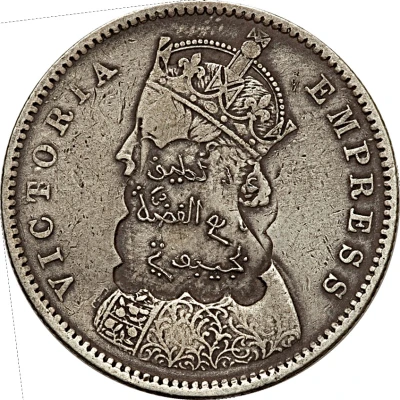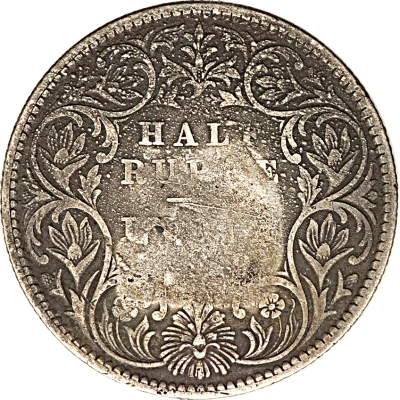


© Heritage Auctions
Indian ½ Rupee counterstamped Victoria ND
| Silver (.916) | 6 g | 24.5 mm |
| Issuer | Djibouti › Obock Territory (1862-1896) |
|---|---|
| Period | French Protectorates (1884-1896) Second French Colonial Empire (1896-1946) |
| Type | Standard circulation coin |
| Years | 1892-1914 |
| Value | ½ Rupee |
| Currency | Indian Rupee (1885-1943) |
| Composition | Silver (.916) |
| Weight | 6 g |
| Diameter | 24.5 mm |
| Thickness | 1.2 mm |
| Shape | Round |
| Technique | Counterstamped, Milled |
| Orientation | Medal alignment ↑↑ |
| Demonetized | Yes |
| Updated | 2024-10-04 |
| Numista | N#142810 |
|---|---|
| Rarity index | 95% |
Reverse
Denomination and date surrounded by wreath.
Script: Latin
Lettering:
HALF
RUPEE
INDIA
Edge
Milled
Comment
In 1862 French merchants bought Obock, a little harbour on the Red Sea. In 1868, shipowners from Marseille settled in Tadjoura gulf. These territories were then sold to the French government in 1884 and this latter extended its protectorate overall this desertic region which sole advantage of was its strategic position after the Suez Canal being bored. In 1896, Obock, Tadjoura, Damakil and Somali territories became the French Somaliland which capital of is Djibouti. Before WW1, foreign coins were mostly circulating in this territory. Indeed, metropolitan coins were legal tender, but they were too scarce. On November 21st 1885, this obliged Commandant Lagarde to enact an order giving legal tender to and to British India and (in the reign of Victoria).Here, the counter stamp is engraved over a Victoria 1/2 Rupee.
Interesting fact
One interesting fact about this coin is that it was counterstamped with the image of Queen Victoria, indicating that it was issued during her reign, which spanned from 1837 to 1901. This means that the coin was likely issued in the late 19th century, during a time of great change and expansion in the British Empire.